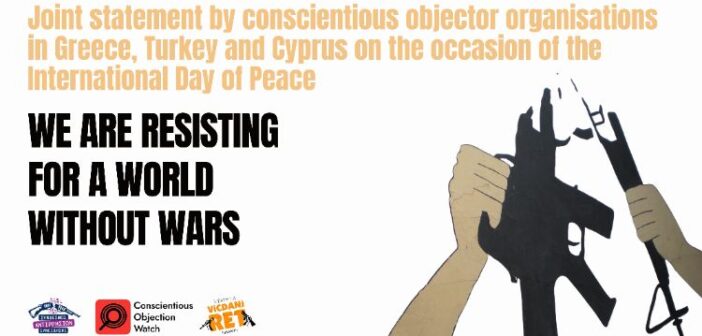Every September 21 has been celebrated as International Day of Peace in different geographies for 43 years, in the hope of a world at peace. Every Peace Day reminds us of something: World War II. A day that each year becomes more ironic than the last. A day when we are confronted with the growing and widespread destruction caused by wars.
So, after all these years since the declaration of International Day of Peace, is there a geography where the smoke of war is not rising?
Today, as the world becomes a great battlefield, war imposes more and more of its own politics, its own economy, its own social culture. It presents itself as an inevitable reality. Over 2 billion people in Palestine, Ukraine, Lebanon, Yemen, Kurdistan, Tigray, Somalia, Sudan, Congo, Armenia, Turkey, Syria, Myanmar, Bangladesh, Iraq, Cyprus, Afghanistan, North and South Korea and many other regions experience this reality in conflict and post-conflict conditions. The world is currently experiencing the highest number of conflicts since 1945.
War is becoming the world’s largest industry, while bringing with it other devices that will cause indirect deaths in these regions, such as food crises and epidemics as well as ecological destruction. According to data released in April 2024 by SIPRI, the Stockholm International Peace Research Institute, total global military expenditure has reached 2443 billion dollars. Military trade between states guarantees the continuity of war by creating geopolitical alliances and enemies while expanding war. Arms industry giants such as Lockheed Martin, Boeing, General Dynamics, Raytheon and Northrop Grumman are becoming the biggest winners even during the global economic crisis.
Armies and state-sponsored corporations boasting of killer drones, killer robots, AI-controlled weapon systems and hypersonic missiles aim to increase the speed and violence of death. We are being forced to live in a process where all scientific organization and technological development is equated with the apparatus and mind of war.
Today, we are talking about the possibility of nuclear war in geographies where war is the de facto rule. The nuclear atrocities we experienced in World War II stand before us today as a possibility in a climate of hatred rendered unconscious by war. The parties to uninterrupted wars are recklessly hurling nuclear threats at each other.
The anxiety fueled by the pandemic, climate crisis, political and economic crisis that humanity has experienced in the last decade is provoked by the culture of war created under the name of security. War, which is the main cause, is presented as the solution to all problems. This pragmatism of war results in militarist culture becoming dominant in everyday life. Individuals, who are products of this culture, appear in different ways as instruments of war.
On the other hand, is there a geography untouched by the voices of anti-war protesters during the ongoing wars?
In almost all war zones, anti-war protesters, conscientious objectors and peace advocates continue to exist, whom the war hegemony tries to block and render invisible. Peace advocates, who are threatened and intimidated by the war-mongering, war-industry-fueled governments through repression, arrest and torture, are still resisting.
Netiwit in Thailand, Yuval in Israel, Mikita in Belarus, Aaron in the USA, Yurii in Ukraine, Halil in Cyprus… are opposing, resisting and rejecting the warmongers. Conscientious objectors continue to challenge the confrontational mentality and the ruthlessness of war, which deepens the global destruction.
Despite the enormity of the war industry and system, those who try to sing the song of peace even in the most difficult geographies dare to exist and to exist.
43 years later, still hoping and believing in a world without wars…
You can download the full joint statement released by the Association of Greek Conscientious Objectors, Conscientious Objection Watch and the Initiative for Conscientious Objection in Cyprus.




